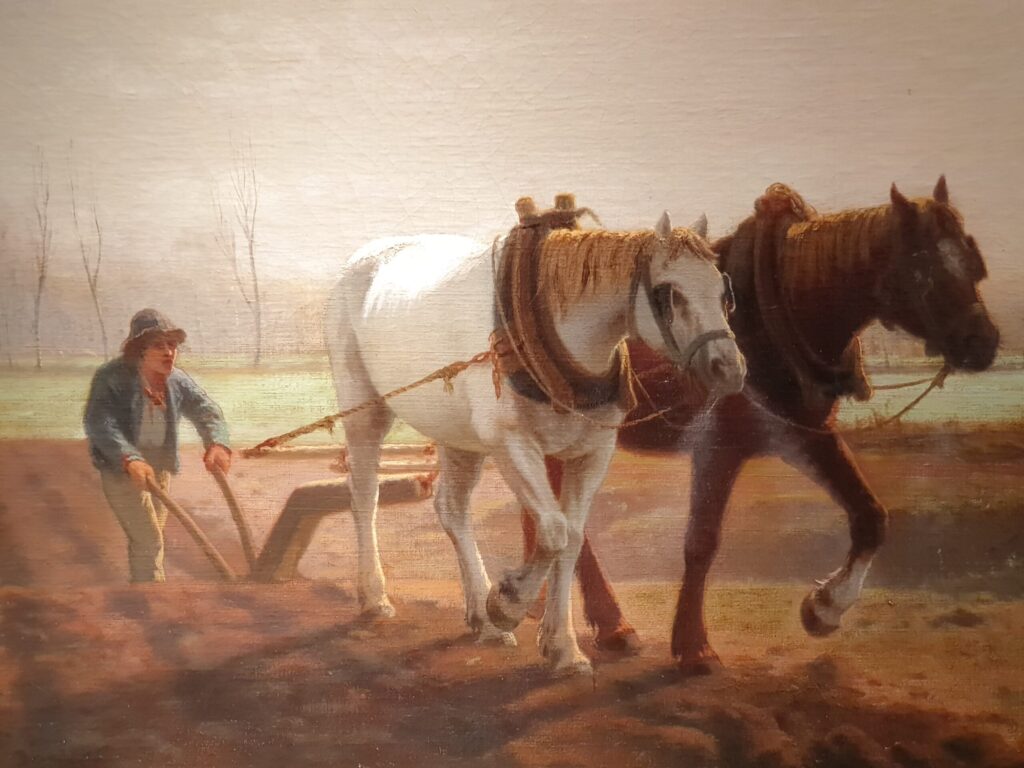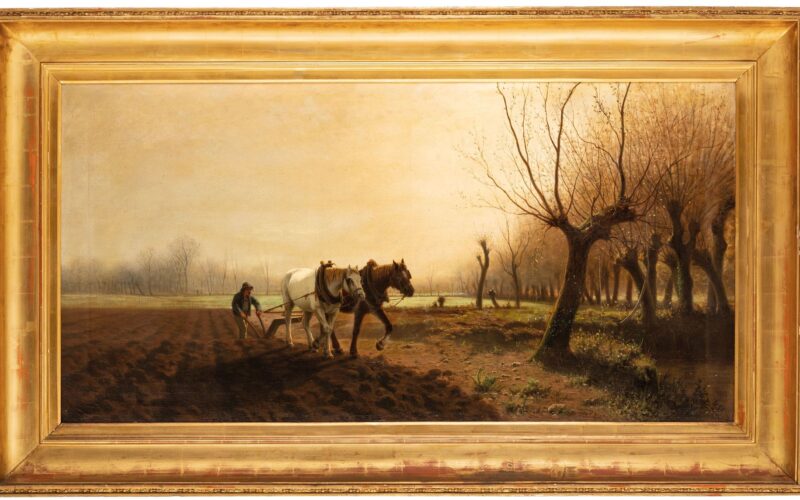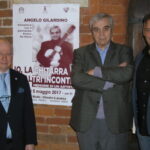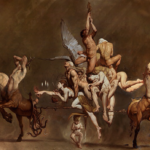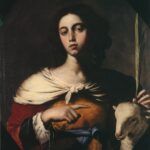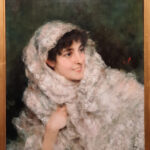Within the ancient embrace of walls safeguarding the ARCA, located in the heart of the Church of San Marco in Vercelli, the exhibition “The Wood That Sings” is celebrated, a heartfelt homage to the distinguished Maestro Angelo Gilardino. It is a place where guitar strings intertwine with the threads of memory, where music becomes color, history, life. Among the displayed works, “The Ploughing” by Luigi Steffani is not just a painting, but a narrative, a seed planted in the canvas that sprouts through the centuries.
Luigi Steffani, an artist with a Lombard heart and European spirit, left his studies to give voice to the earth with his brushes. A traveler among the currents of landscape art, he brought the romantic dreams of Düsseldorf, Paris, and London to Italy. His “The Ploughing” is a canvas that speaks of labor, sweat, daily resilience, where man, horse, and nature merge into a single breath.
In this work, one can feel the social pulse of an era in which art begins to mirror the true life of the working classes, revealing their dignity and beauty. “The Ploughing” thus becomes a visual manifesto of humanity, a hymn to the heroic simplicity of those who, with their hands, shape the future of the land they tread.
The exhibition “The Wood That Sings,” which tunes the symphony of Gilardino’s life and work, sees in “The Ploughing” the echo of a teaching not only musical but also vital, where the farmer’s plow symbolizes the deep work of the Maestro: to sow notes, cultivate talents, mature the art of the guitar. Each furrow in the earth is like a string on which a note dances, every grain of soil flying away with the plow is like a seed of melody that will find roots in time.
Expanding on the social, “The Ploughing” is laden with symbolism: it represents the incessant and laborious search for progress, a progress not only agricultural but also social and educational. Just as the farmer prepares the land for future harvest, Gilardino has prepared the cultural soil, educating generations of musicians and enthusiasts in the profound understanding of guitar music. His pedagogical work, like the farmer’s labor, is an investment in the future, a legacy of growth and hope.
“The Ploughing,” in this context, becomes a metaphor for the act of sowing: both in the literal sense of the farmer working the land and in the figurative sense of the Maestro sowing knowledge, beauty, and inspiration. It is an indissoluble bond that unites visual and musical art, both expressions of a commitment towards tomorrow, which in the exhibition “The Wood That Sings” find a sublime consonance.
